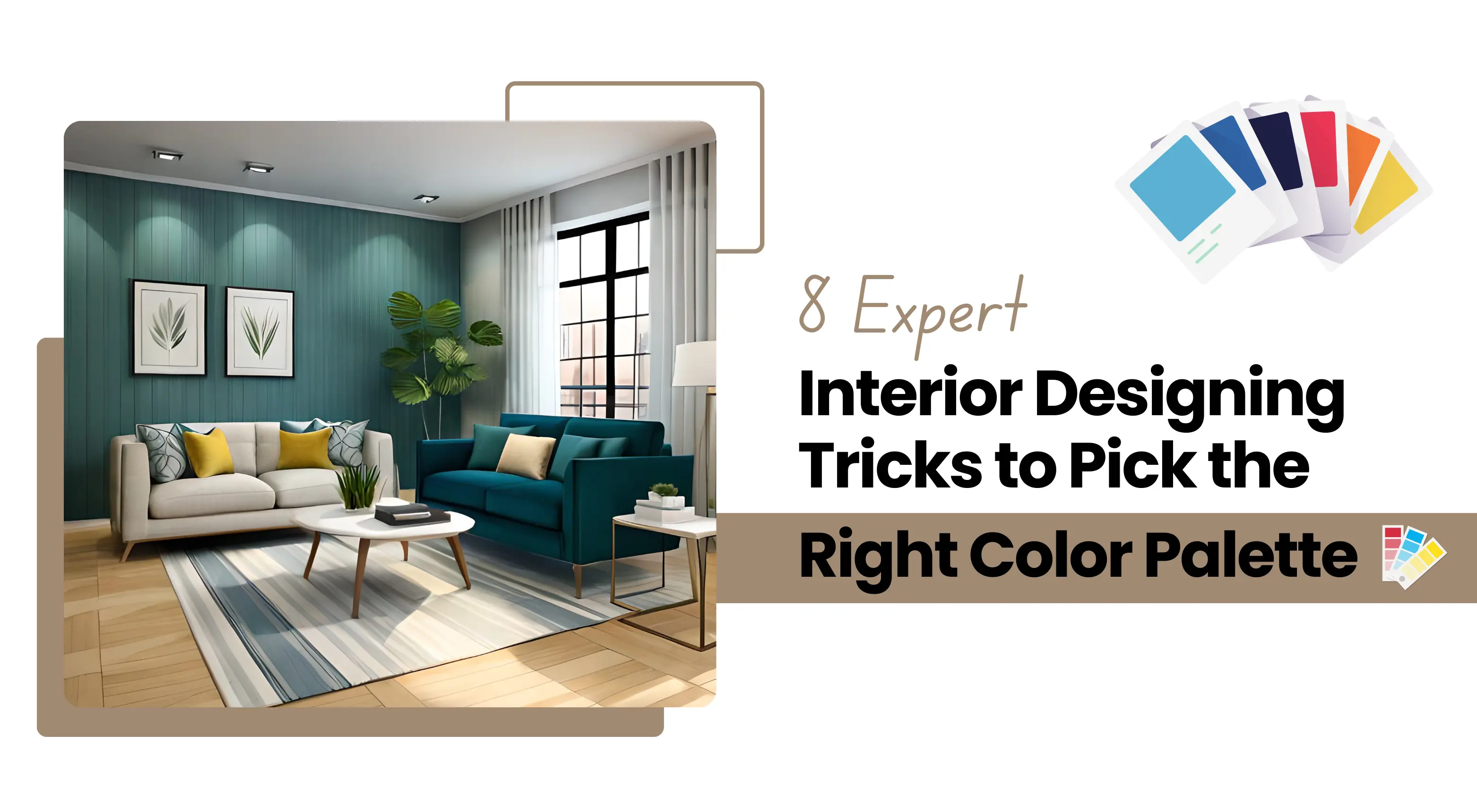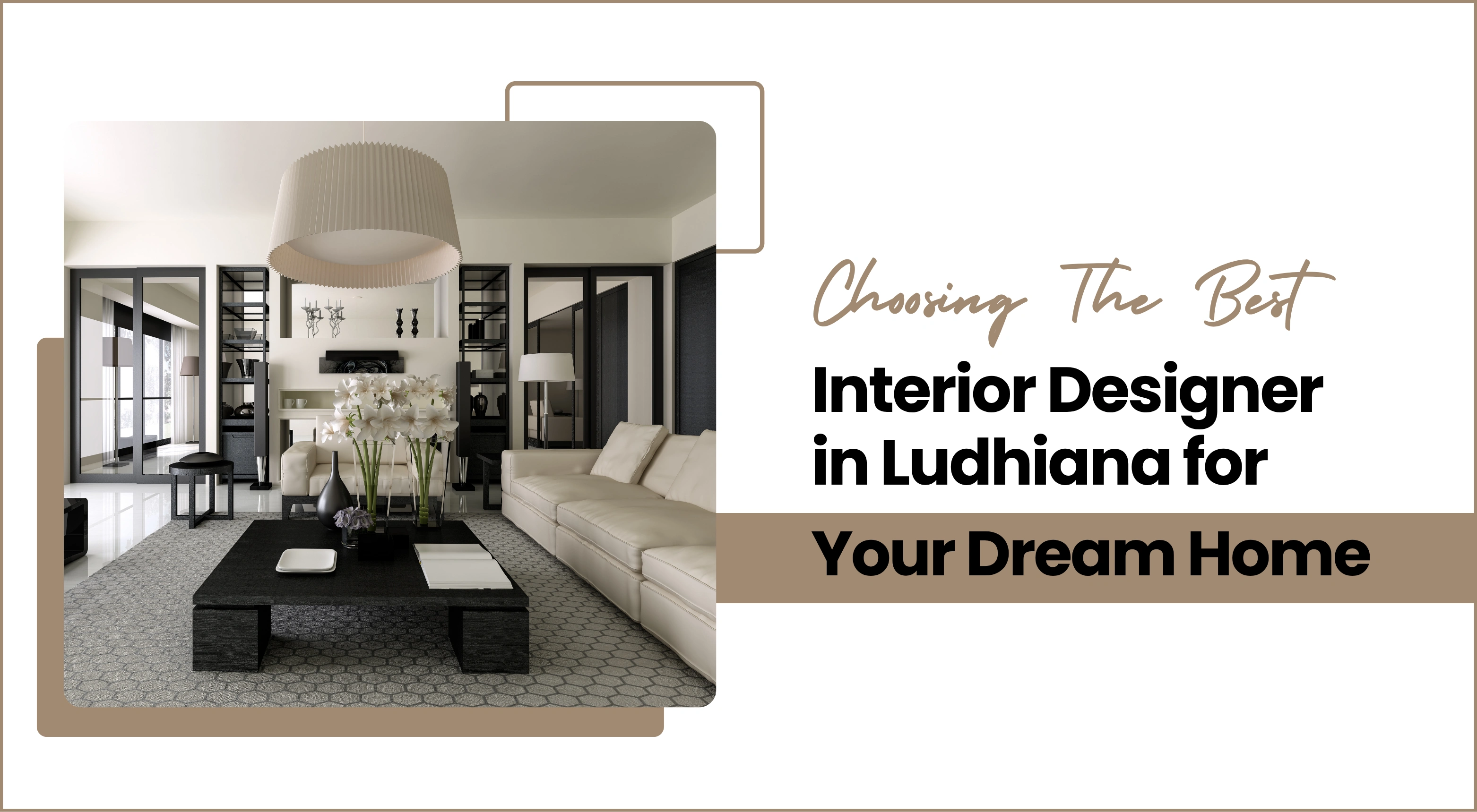Contact Us
Head Office: House Number 121, Sector 8A, Sector 8, Chandigarh, Haryana 160009
Contact No: +91-9814279771, +91-9814279995
© 2025 Aradhana Kakar Designs All rights reserved


More than just your favorite shades, the choice of color palette has some bearing on the appearance of rooms. It can make a space seem larger or smaller and can affect a room's warmth or coolness; there lies the created ambience. A beautiful house is the one created by a color scheme that makes the home feel warm and inviting. Choosing colors for your home illustrates your style and personality. In this blog, we will discuss the steps with which you can approach color choices confidently. This will help you in creating balanced living spaces.
If you live near or in Chandigarh, then working with a Professional Interior Designer in Chandigarh will streamline your color selection process considerably. Chandigarh, being a city with modern architecture and planned urban design, is home to a bunch of adept interior designers who understand the local lifestyle and preferences. These pros offer personalized color consultations and interior design solutions that marry function with aesthetic appeal to reflect your personality and the region's contemporary vibe. With their help, every room in your home will carry an ambience of harmony and welcome.
Colors are strong. They can give a calming sensation to a space or an energetic feeling. Colors can also give cozy sensations or a cool and fresh effect in a room. Psychologists say colors influence our feelings and actions in different ways. When selecting colors, you should not only think about what looks good. You should also think about how you want to feel in each space. The wrong choice can make a room feel off.
The selection process of color palettes represents a significant choice that leads to decision fatigue. Breaking the selection process into smaller tasks reduces the burden of making choices. The following steps provide simple guidelines for selecting colors without confusion.
After selecting your primary color, you need to decide on two or three supporting colors. The selected colors will boost your primary color. They create a gentle balance in the area. A good combo can prevent the interior from looking either too plain or too busy. How do you choose complementary colors:
Your main color is the basis for the color scheme of your home. Apply it mainly to walls and large furniture or décor. Choose a shade you will enjoy all day. The main color can set the mood for the whole home. It also makes picking the supporting tones easier. Some tips on choosing your main color:
Each space in a home has unique needs. So, the color choice should reflect the feelings and functions of that area. The way people use a room affects their color choices. Colors can create calm, energy, or warmth. Here are some color suggestions for the different rooms:
Lighting has the power to transform the way colors present themselves within your residential space. The color selection, which appears perfect in store displays, will transform into a different shade after it appears on your home walls. Considering the lighting environment should be part of your decision process when selecting color arrangements. Your colors will remain vibrant and eye-catching throughout the day through this approach. Things to keep in mind about lighting:
White, along with beige, gray, and taupe, serves as a neutral colors that establish equilibrium in the color arrangement. The neutral colors work seamlessly to pair with both warm and cool color families. The use of bold accent colors does not overpower the room. The design maintains a controlled aesthetic. Use neutral shades for your primary components, including furniture pieces, walls, and flooring. Use vibrant colors to enhance tiny decorative components.
Choosing colors for your home means knowing how they flow from one room to another. The house will appear fragmented when the room colors do not match each other. Select colors that create harmonious relationships. When colors transition between spaces without interruption, they create a natural flow. Many rooms can share the same base color while you change the accent color palette. The design keeps a sense of unity but lets each room show its character.
A room's color transformation often leads to major disappointment among people. Large surfaces unusually display colors. Before making a purchase, you can perform color compatibility tests between your furniture pieces and your flooring, along with your decorations. The following steps will help you conduct successful color tests:
Using different color combos instead of just one makes a room look better. Patterns and textures bring rooms to life. They make spaces more appealing and vibrant. Patterns and textures add depth. They turn flat spaces into lively, engaging areas. Ways to apply textures and patterns:
Choosing a color scheme for your house should create a beautiful balance. It has to invite life into your space. This choice makes the home deeply gracious. Consider the lighting, the function, and the flow of matters across spaces when choosing colors. These ensure that your color palette is well coordinated throughout the house.
Never just pick a paint color for your wall without testing it first. This would be one of the interior design tips that would surely save you from an expensive mistake that could eat into your precious time and money. When you test a color in different lighting situations, you get a true sense of how it will be throughout the day.
Choose colors that reflect your personality and way of life. Positivity should emanate from them throughout the day. Better-looking homes, comfortable spaces, and uplifting moods are all possible with a cleverly chosen palette.
Perfect colors for your home are basically in balance between its beauty and their emotional effect. Interior design tips, if incorporated, would help you translate your living spaces into inviting, balanced, and lively places that feel like home.

Hire a top commercial interior designer in Chandigarh to create a stylish, functional office or shop. Perfect for new setups or renovations.
Read More
Read more about personalized interior design in Ludhiana with Aradhana Kakar Designs—expert guidance, smart styling, and seamless home transformation.
Read More.webp)
Explore the top 8 interior design tips to make a small room look spacious. Learn how smart layouts, lighting, and furniture choices can open up your space.
Read More